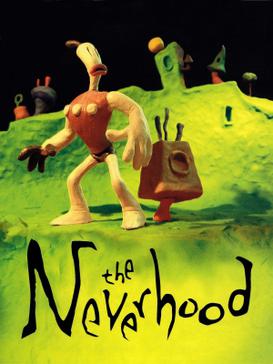
The Neverhood is a 1996 point-and-click adventure video game developed by The Neverhood, Inc. and published by DreamWorks Interactive for Microsoft Windows. The game follows the adventure of a claymation character named Klaymen as he discovers his origins and his purpose in a world made entirely out of clay. When the game was originally released, it was unique in that all of its animation was done entirely in claymation, including all of the sets. The gameplay consists mostly of guiding the main character Klaymen around and solving puzzles to advance. Video sequences help advance the plot. In addition to being unique, The Neverhood aimed at being quirky and humorous, as is evident by the characters, the music, and the plot sequence. It received a sequel in 1998, Skullmonkeys, which was a platform game, abandoning the adventure format of the original.

Rise of the Robots is a fighting game released by Time Warner Interactive in 1994. Originally developed for the Amiga and DOS by Mirage's Instinct Design, it was ported to various video game consoles, including the Super NES, the Mega Drive, and the 3DO Interactive Multiplayer. The game includes a single-player mode in which the player assumes the role of the ECO35-2 Cyborg, as he attempts to stop the Supervisor who takes over Electrocorp's facilities in Metropolis 4.

Riven: The Sequel to Myst is a puzzle adventure video game, the second in the Myst series of games. Developed by Cyan Worlds, it was initially published by Red Orb Entertainment, a division of Broderbund. Riven was distributed on five compact discs and released for Mac and Windows personal computers on October 31, 1997, in North America; it was later released on a single DVD-ROM in 1998. Riven was also ported to several other platforms. The story of Riven is set after the events of Myst. Having been rescued from the efforts of his sons, Atrus enlists the help of the player character to free his wife from his power-hungry father, Gehn. Riven takes place almost entirely on the Age of Riven, a world slowly falling apart due to Gehn's destructive rule.

Myst III: Exile is the third title in the Myst series of graphic adventure puzzle video games. While the preceding games in the series, Myst and Riven, were produced by Cyan Worlds and published by Brøderbund, Exile was developed by Presto Studios and published by Ubi Soft. The game was released on four compact discs for both Mac OS and Microsoft Windows on May 8, 2001; versions for the Xbox and PlayStation 2 were released in late 2002. A single-disc DVD version was later released for Windows and Mac OS.

Myst IV: Revelation is an adventure video game, the fourth installment in the Myst series, developed and published by Ubisoft. Like Myst III: Exile, Revelation combines pre-rendered graphics with digital video, but also features real-time 3D effects for added realism. The plot of Revelation follows up on plot details from the original Myst. The player is summoned by Atrus, a man who creates links to other worlds known as Ages by writing special linking books. Almost twenty years earlier, Atrus' two sons nearly destroyed all of his books and were imprisoned; Atrus now wishes to see if his sons' imprisonment has reformed them. The player travels to each brother's prison, in an attempt to recover Atrus' daughter Yeesha from the brothers' plot.

Gobliiins is a puzzle adventure video game series, consisting of five entries, released by Coktel Vision for the Amiga, Atari ST, DOS, and Macintosh platforms. The first three titles were released in the early 1990s, the fourth in 2009. The visual look of the series and its characters were created by French artist Pierre Gilhodes, whose style was used in another game from Coktel Vision: Woodruff and the Schnibble of Azimuth.
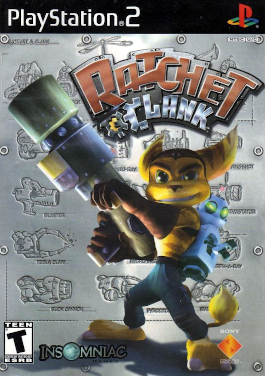
Ratchet & Clank is a platform video game developed by Insomniac Games and published by Sony Computer Entertainment for the PlayStation 2 in 2002. It is the first game in the Ratchet & Clank series.

The Sentinel, released in the United States as The Sentry, is a puzzle video game created by Geoff Crammond, published by Firebird in 1986 for the BBC Micro and converted to the Commodore 64, Amstrad CPC, ZX Spectrum, Atari ST, Amiga and IBM PC compatibles. The Sentinel was among the first games to use solid-filled 3D graphics on home computers. It won numerous awards upon release and has since appeared on several "best video games of all time" lists.

Cave Story is a 2004 Metroidvania platform-adventure game for Microsoft Windows. It was developed over five years by Japanese independent developer Daisuke "Pixel" Amaya in his free time. Cave Story features 2D platform mechanics and is reminiscent of the games Amaya played in his youth, such as Metroid and Castlevania. After its initial self-published release, the game slowly gained popularity on the internet. It received widespread critical acclaim for many polished aspects of its design, such as its compelling characters, setting, story, and gameplay. Cave Story is considered by many as the quintessential indie game because of its one-person development team and influence on the video gaming world.
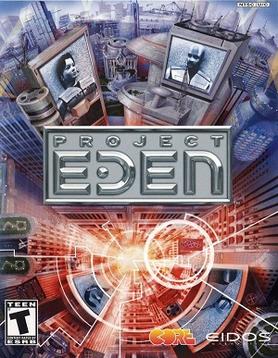
Project Eden is a 2001 action-adventure video game developed by Core Design and published by Eidos Interactive. It was released for Microsoft Windows and PlayStation 2. The planned Dreamcast version was cancelled. The plot involves a squad of four law enforcement agents investigating the disappearances of people by working their way downwards through layers of a towering mega-city. Project Eden's gameplay emphasises puzzle-solving, requiring the player or players to control each of the four characters and use their individual abilities to make progress. A single player can control any one of the characters, and jump between them at will or up to four players can play simultaneously as different members of the team.
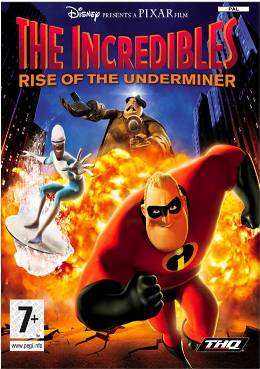
The Incredibles: Rise of the Underminer is a 2005 action-adventure video game which serves as an alternative sequel to the animated film The Incredibles (2004) as well as its associated video game tie-in. The GameCube, PlayStation 2, and Xbox versions were developed by Heavy Iron Studios, while Beenox handled the Microsoft Windows and Mac OS X versions, and the Game Boy Advance and Nintendo DS versions was developed by Helixe. A PlayStation Portable version developed by Pacific Coast Power & Light was also announced but never released. It features Mr. Incredible and Frozone fighting The Underminer's legion of robot minions. The game features cameo appearances by the rest of the Incredibles, though they are not playable characters and have no spoken lines. John Ratzenberger reprises his role of the Underminer in the video game, while Craig T. Nelson and Samuel L. Jackson are replaced by Richard McGonagle and Philip Lawrence as Mr. Incredible and Frozone, respectively. This is the first Pixar game to earn an E10+ rating by the ESRB.

Sheep is a strategy puzzle video game released for PlayStation, Microsoft Windows and Game Boy Advance. In 2001 it was released for Mac OS X by Feral Interactive. The Game Boy Advance version was supposed to be released in North America in the spring of 2002, but was canceled for unknown reasons.
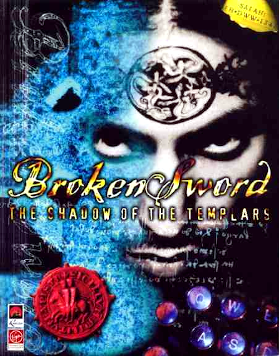
Broken Sword: The Shadow of the Templars is a 1996 point-and-click adventure game developed by Revolution Software. It is the first in the Broken Sword series, co-written and directed by Charles Cecil. The player assumes the role of George Stobbart, an American tourist in Paris, as he attempts to unravel a deep conspiracy involving a sinister cult and a hidden treasure, seeing him travel to various locations around Europe and the Middle East. The game's storyline was conceived to feature a serious tone and heavily influenced by research on Knights Templar by Cecil, but was also interlaced with humor and graphics in the style of classic animated films.

Pipe Mania is a puzzle video game developed by The Assembly Line for the Amiga and published in 1989. It was ported to several other platforms by Lucasfilm Games as Pipe Dream; the company distributed the game in the US. The player must connect randomly appearing pieces of pipe on a grid to a given length within a limited time.

Tomb Raider is a 1996 action-adventure video game developed by Core Design and published by Eidos Interactive. It was first released on the Sega Saturn, followed shortly by versions for MS-DOS and the PlayStation. Later releases came for Mac OS (1999), Pocket PC (2002), N-Gage (2003), iOS (2013) and Android (2015). It is the debut entry in the Tomb Raider media franchise. The game follows archaeologist-adventurer Lara Croft, who is hired by businesswoman Jacqueline Natla to find an artefact called the Scion of Atlantis. Gameplay features Lara navigating levels split into multiple areas and room complexes while fighting enemies and solving puzzles to progress.
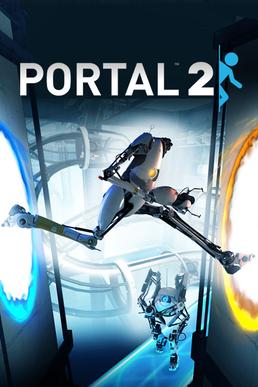
Portal 2 is a 2011 puzzle-platform video game developed by Valve for Windows, Mac OS X, Linux, PlayStation 3, and Xbox 360. The digital PC version is distributed online by Valve's Steam service, while all retail editions were distributed by Electronic Arts. A port for the Nintendo Switch was included as part of Portal: Companion Collection.

Machinarium is a puzzle point-and-click adventure game developed by Amanita Design. It was released on 16 October 2009 for Microsoft Windows, OS X, Linux, on 8 September 2011 for iPad 2 on the App Store, on 21 November 2011 for BlackBerry PlayBook, on 10 May 2012 for Android, on 6 September 2012 on PlayStation 3's PlayStation Network in Europe, on 9 October 2012 in North America and on 18 October 2012 in Asia, and was also released for PlayStation Vita on 26 March 2013 in North America, on 1 May 2013 in Europe and on 7 May 2013 in Asia. Demos for Windows, Mac and Linux were made available on 30 September 2009. A future release for the Wii's WiiWare service was cancelled as of November 2011 due to WiiWare's 40MB limit.
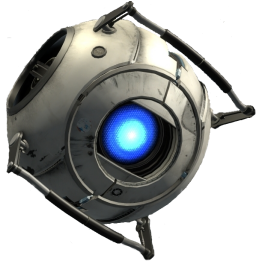
Wheatley is a fictional artificial intelligence from the Portal franchise, first introduced in the 2011 video game Portal 2. He is voiced by British comedian and writer Stephen Merchant, and created in part by Portal 2's designer Erik Wolpaw.
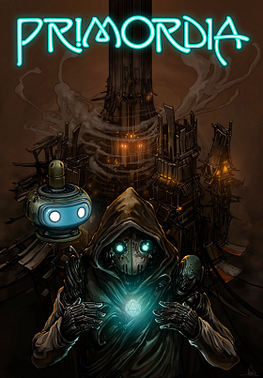
Primordia is a cyberpunk point-and-click adventure game developed by Wormwood Studios and published in 2012 by Wadjet Eye Games. In 2016, Primordia was released on iOS devices. On March 2, 2022, the game was released on Nintendo Switch.

TrackMania is a racing video game developed by Ubisoft Nadeo and published by Focus Home Interactive. It is the first game in the TrackMania series.




















